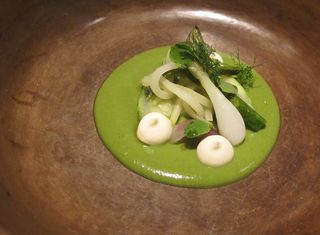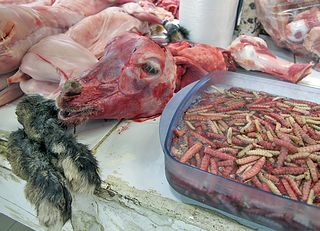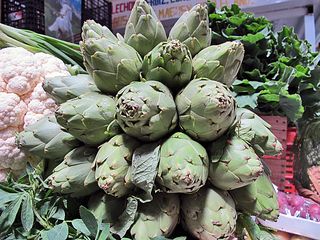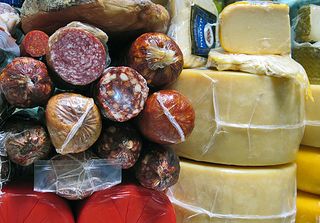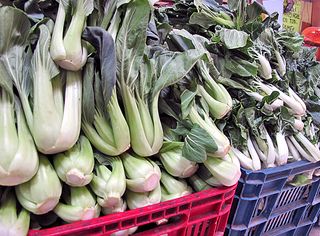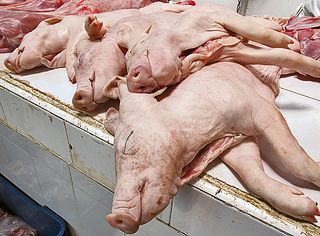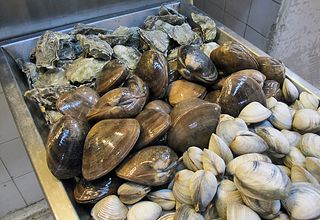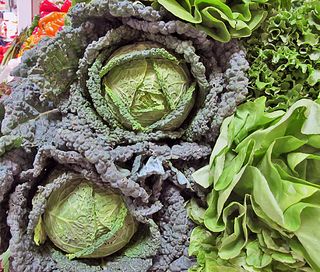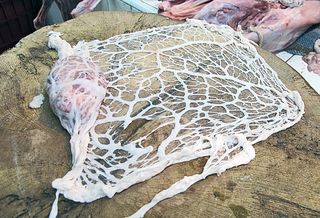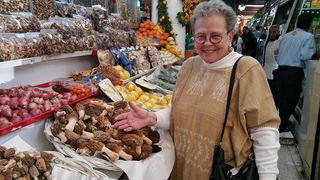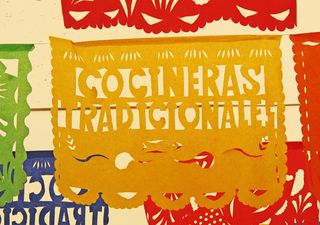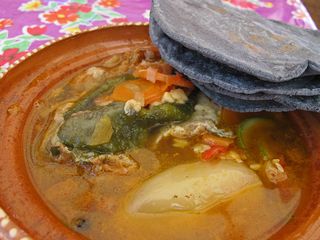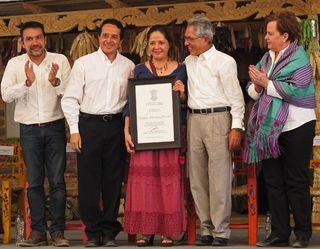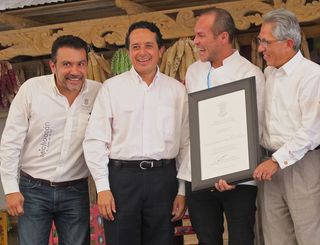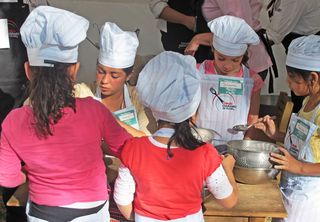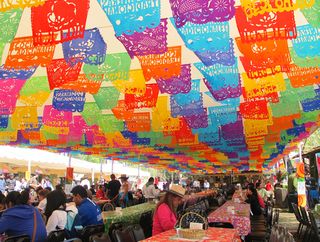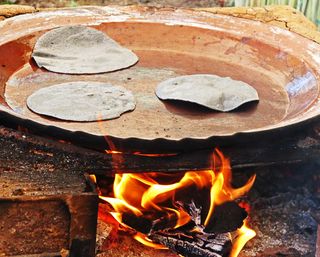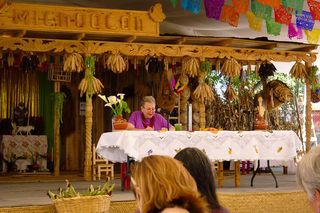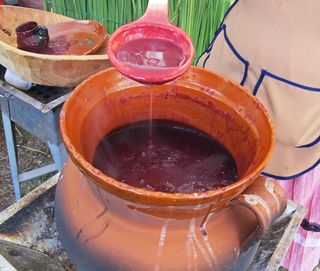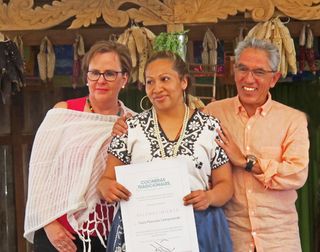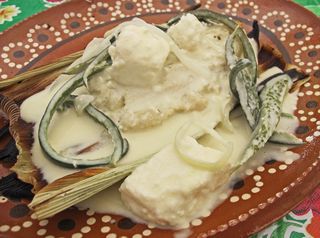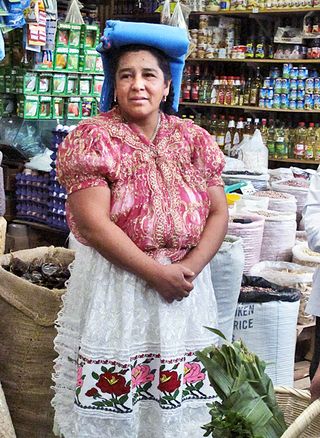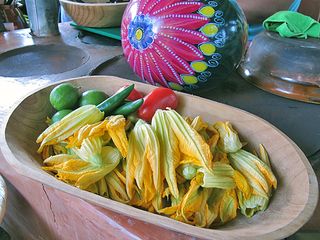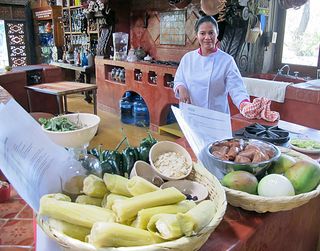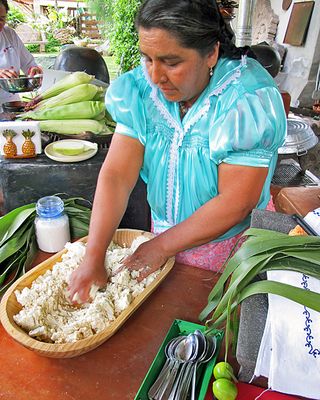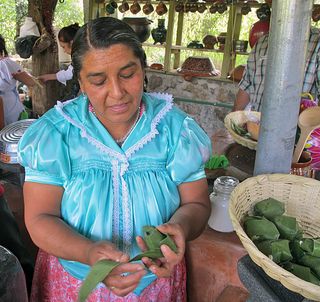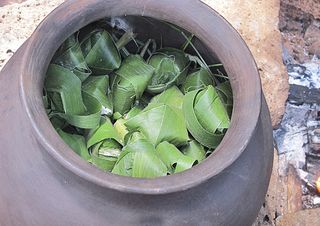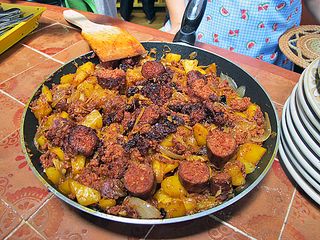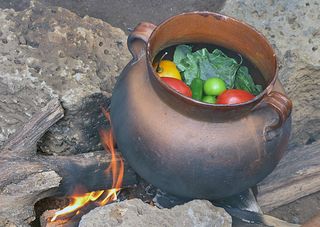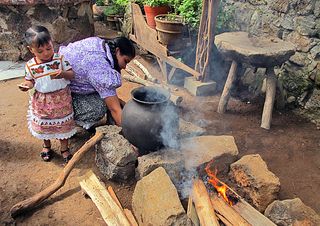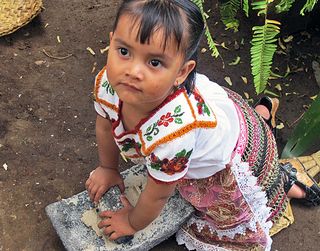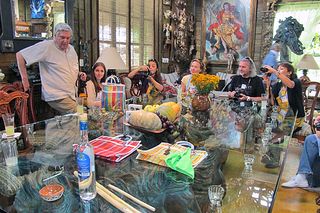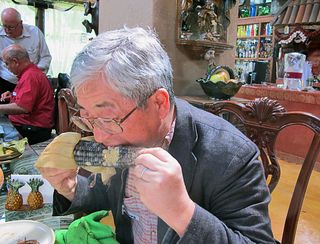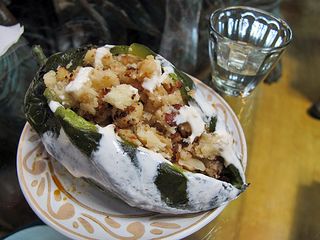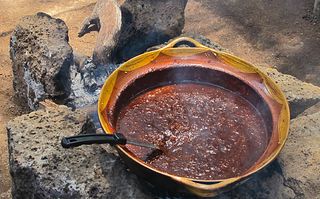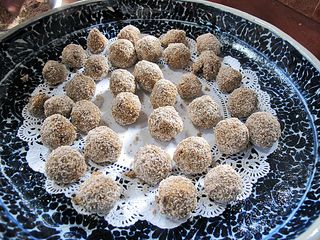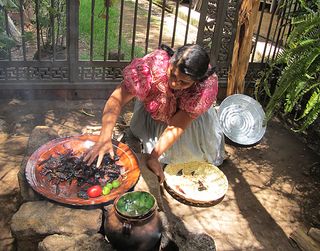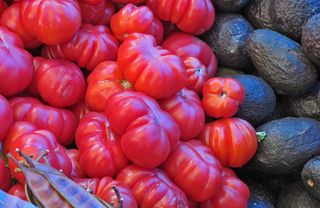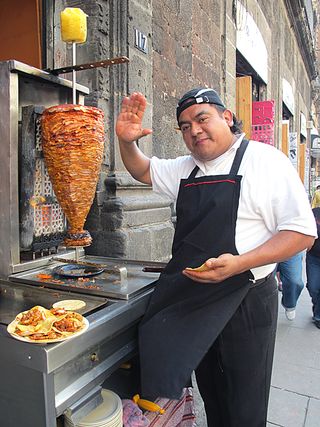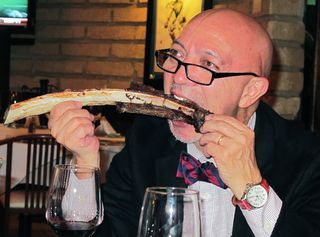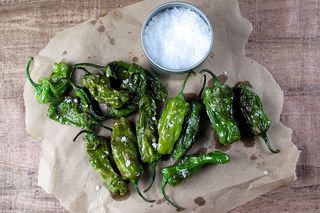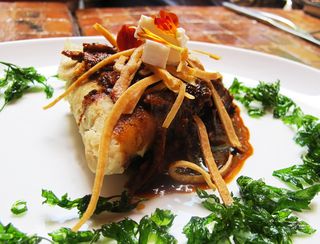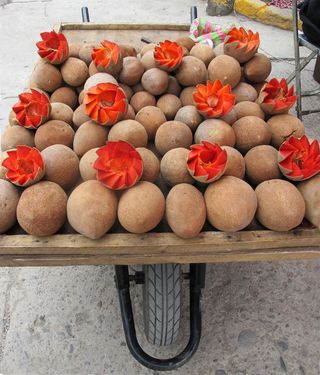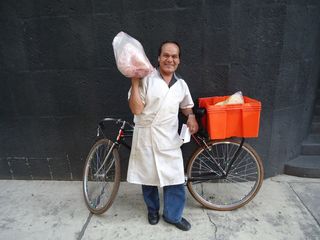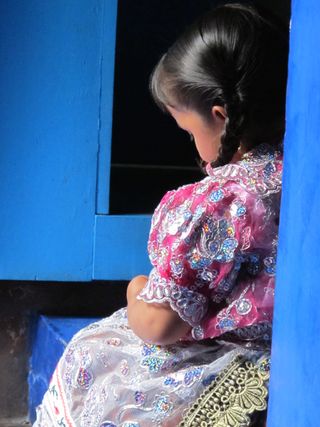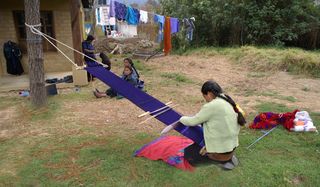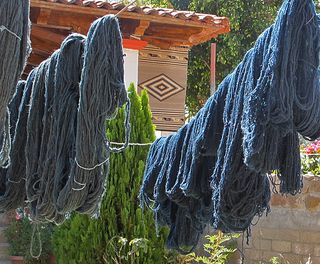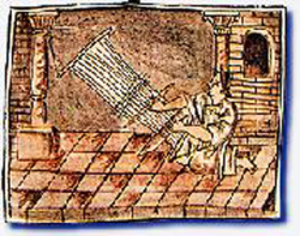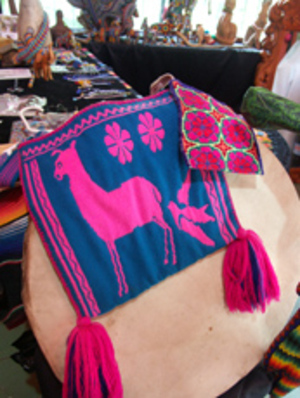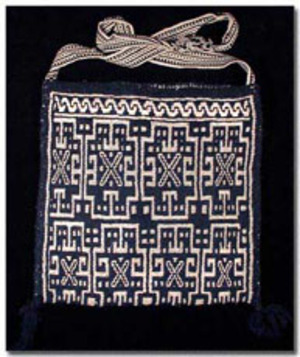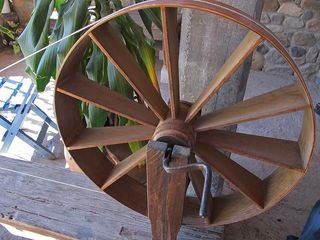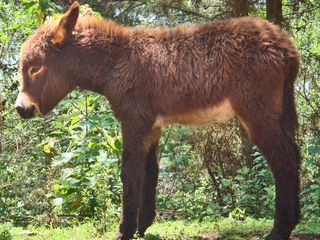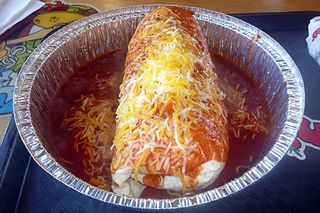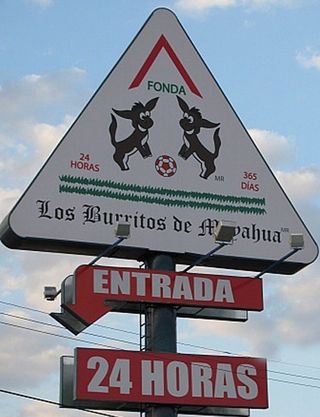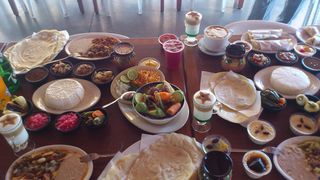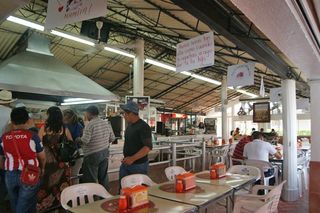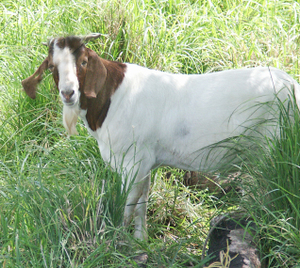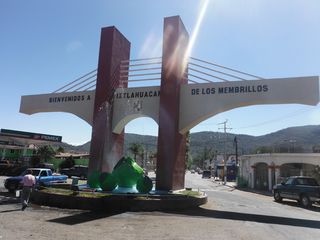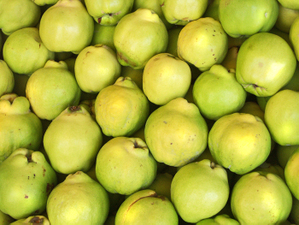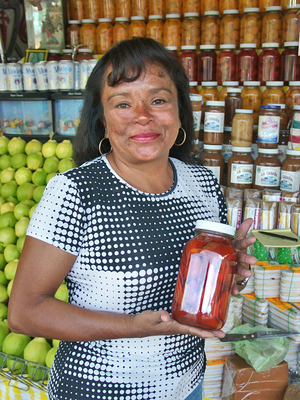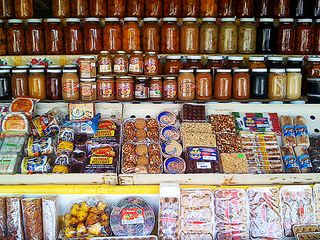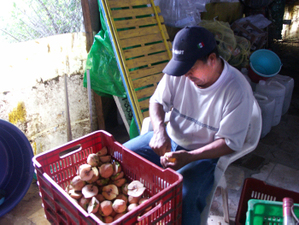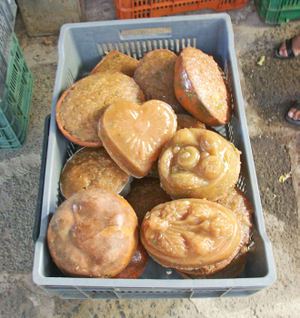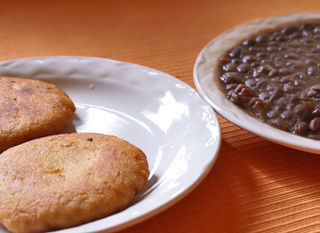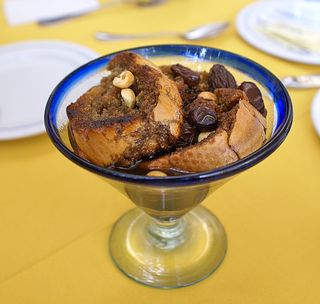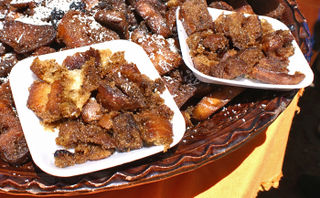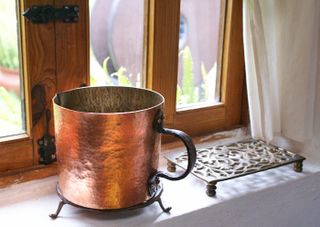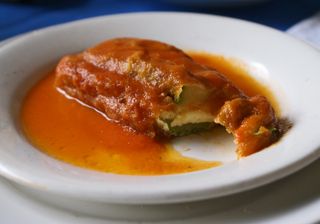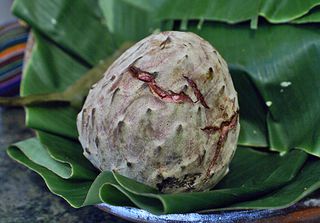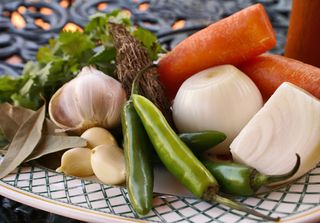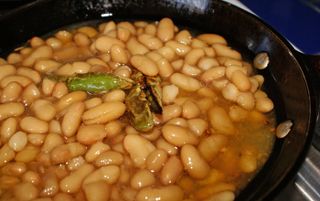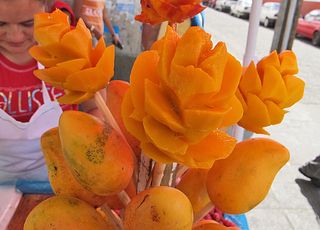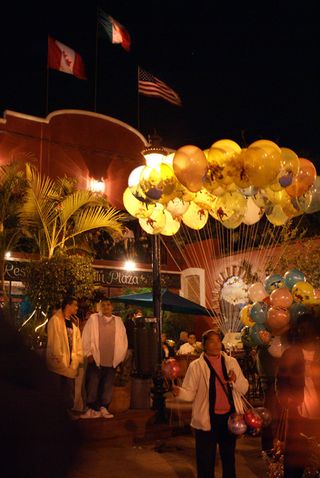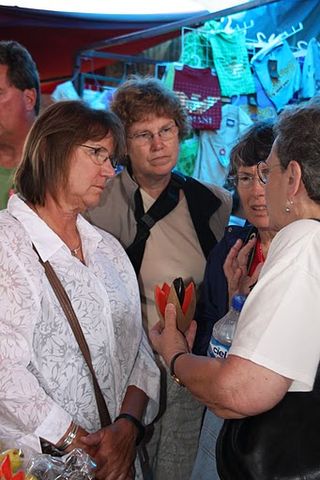
Entrance, Restaurante Pujol, Mexico City.
Enrique Olvera, the founding thinker and chef/owner at Mexico City's Restaurante Pujol, graduated in 1999 from the Culinary Institute of America in Hyde Park, New York. Pujol opened 16 years ago, and its name has become a household word among followers of Mexican cuisine and its trends. Pujol, in case anyone here has been snoozing under a rock, is presently considered to be the best restaurant in Mexico and the 20th best restaurant in the world, according to San Pellegrino's 2014 "50 Best Restaurants" list.

Chef Enrique Olvera. Photo courtesy Suena México.
Several weeks ago, invited by a lovely friend, Mexico Cooks! made a reservation for three at this temple of gastronomy. Several recent reviews of Pujol's dishes and service have reflected a shadow of decline; chef Enrique has naturally devoted tremendous time and attention of late to the December 2014 opening of Cosme, his New York City restaurant.
I felt excited, on guard, and a touch nervous about dining at Pujol; I deeply wanted it to be fabulous and, in the name of pure contrariness, I deeply wanted to turn up my nose. You're absolutely right: ambivalence was my middle name.

Pujol's menu for our comida (main meal of the day) on March 8, 2015. The extensive tasting menu changes daily; no other menu is offered. Click on any photo for a larger view.
In order of appearance:
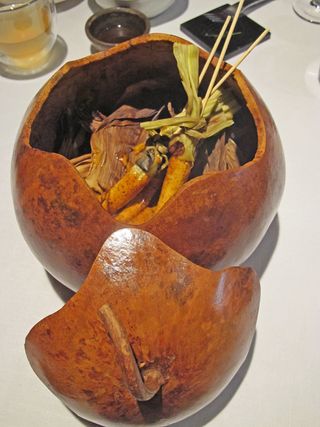
Elotitos con mayonesa de hormiga chicatana, café, y chile costeño (tiny ears of corn roasted with ground ants, coffee, and coast-style chile), served still steaming in a bule (a kind of dried gourd).

Bocol huasteco, con relleno de queso y pico de gallo. A tiny infladita (puffed-up tortilla) filled with cheese, topped with a salsa of minced raw tomato, chile, onion, and cilantro.
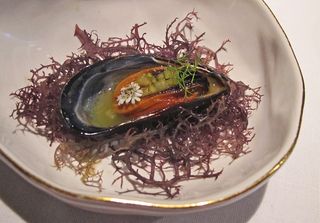
Crudo: mejillón salvaje con pepino y cilantro (wild mussel with cucumber and cilantro).
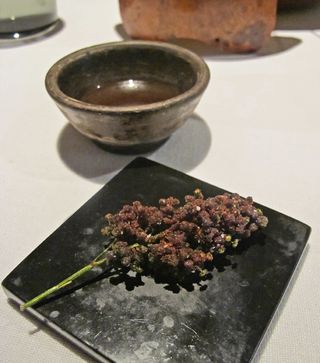
Tempura de huauzontle con consomé de cebolla quemada (huauzontle tempura with burned onion consommé).
Each of the entradas (appetizers) was a revelation of flavor. As I study these photographs, my mind's palate is reminded of the "OH!" that inadvertently accompanied the first taste of each dish. That 'oh' was a composite of surprise, recognition, and sheer joy at chef Enrique's inventiveness.
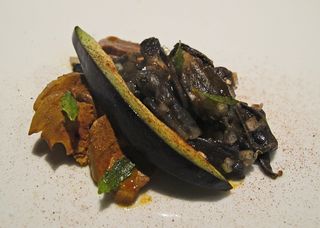
Huitlacoche, higado, mollejas (corn smut, liver, and gizzards).
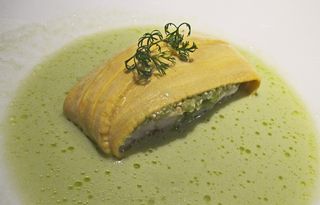
Pesca del día, plátano macho, salsa verde, curry blanco, aceite de cilantro (fish of the day with plantain, green sauce, white curry, and cilantro oil).
Pulpo, tostada de tinta, mayonesa de habanero y orégano (octopus, octopus ink tostada, habanero mayonnaise, and oregano).

Taco de barbacoa, adobo de chile guajillo, hoja de aguacate, puré de aguacate (pit-cooked lamb flavored with chile guajillo, anise-y avocado leaf, and puréed avocado).
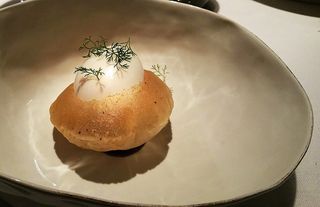
Huevo escondido (hidden egg). Photo courtesy Pamela Gordon.
Is this Mexican food? I think the offerings are nothing that a standard-issue Mexican home cook would recognize. On the other hand, she would definitely recognize the components of these dishes, if not their specific uses in the Pujol lexicon.
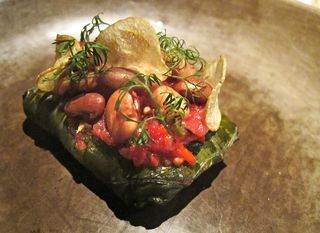
Tamal de papa, hoja santa, y frijol criollo (potato, hoja santa, and native bean tamal).

Polomo, kumquat y vegetales fermentados (tender and juicy roast pork, served with fermented vegetables).
Among his numerous special gifts, you can expect that Enrique Olvera will be full of culinary surprises. He is an outside-the-box thinker in the kitchen, an innovator par excellence and much imitated. In the photo two paragraphs below, you see his personal take on mole, that icon of central Mexican cuisine. Chef Enrique describes in his own words the dish that he calls mole madre:
"Our mole changes on its own, unpredictably. Some days it’s tired, other days it’s lively and bright. We never treat it the same way. The only thing we know is that the seasons and the mole’s attitude on the day in question are going to determine the preparation. Sometimes we add macadamias, sometimes almonds. Once, because we thought the mole was starting to get bored and needed a little kick in its ass, we threw in a dash of tamarind. Last summer, we incorporated purple bananas for a few days, and one time, we mixed in some great panochera apples. Of course, a traditional mole recipe will call for local and seasonal ingredients, but because people don’t tend to add new mole to their old mole, I guess there isn’t one like ours out there.
"This mole is an example of what most of us strive for: creating something that is personal, but not necessarily new. At the risk of sounding ridiculous, our ability to consciously build upon the knowledge of our ancestors is what gives us an advantage over a lot of the other animals on the planet. It’s part of our nature as humans — and as cooks. This, for me, is what makes progressive cooking so important. Younger cooks will end up being better than we are now, just as we’re better than those that came before us. Well, some of them."
–Enrique Olvera

Mole madre ('mother' mole), 604 days old the afternoon that we were there, with a central disc of 'new' mole. Served without protein, with fresh-from-the-comal (griddle) tortillas.
Five desserts, listed on the menu as simply "Final feliz"–happy ending.

Manzana verde con mezcal (green apple with mezcal), a salty, savory, palate-cleansing dessert with a surprise: sal de gusano (worm salt) sprinkled atop the apple slice.

Crujiente de manzana con crema de canela (crisp apple slices with cinnamon cream). The apple slices look like banana chips–but instead, they are finely cut and perfectly delicious apple crisps.

Helado de lichi con sopa de coco, con un toque de gengibre (litchi ice cream with a coconut 'soup'–heightened by a touch of ginger). The form of both the plate and its contents were a visual echo of the huevo escondido, and yet each was totally different from the other.
Did we love what we ate? We did, we definitely did. Would I go back again? Yes, probably, for the most special of special occasions. At this particular meal, the three of us very carefully chose from the long menu of tasting portions, choosing specifically so that we could each try everything.
And the shadow of decline that I mentioned as I began writing? It was nowhere in evidence. The room, the service, and the food were all top-notch. If I were to grade our experience, I'd give it a '10'–Mexico's highest grade.
My opinion? There's no other restaurant in Mexico City that compares with Pujol.

Pastelito de chocolate negro y plátano (a tiny dark chocolate cake with banana filling).
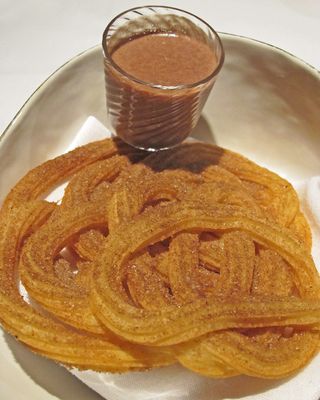
Churros y chocolate, estilo Pujol (churros and hot chocolate, Pujol style).

After our meal, the waiter did a great job taking la foto de recuerdo (our picture as a memento of the occasion). Left to right, Pamela Gordon, Judith McKnight, and Cristina Potters.
Restaurante Pujol
Calle Francisco Petrarca #254
Miguel Hidalgo, Polanco
Mexico City, Mexico
Telephone: 5545 3507
Looking for a tailored-to-your-interests specialized tour in Mexico? Click here: Tours.
